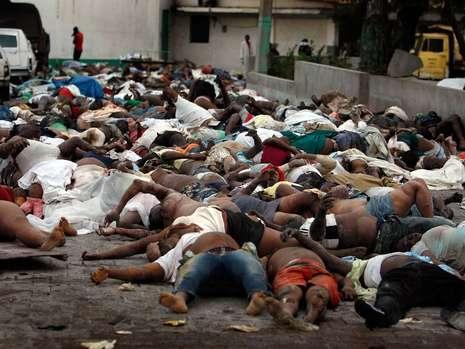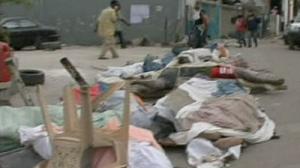 Corpse roadblock
Corpse roadblock
set up by
protesting survivors
Thousands scramble as aid slow to arrive
Desperate Haitians set up roadblocks with corpses in Port-au-Prince yesterday to demand quicker relief efforts after the massive earthquake that killed an estimated 50,000 people.
Angry survivors staged the protest as international aid began arriving in the Haitian capital to help a nation traumatized by Tuesday's catastrophic earthquake that flattened homes and government buildings.
More than 48 hours after the disaster, tens of thousands of people clamoured for food and water and help digging out relatives still missing under the rubble.
Shaul Schwarz, a photographer for Time magazine, said he saw at least two downtown roadblocks formed with bodies of earthquake victims and rocks.
"They are starting to block the roads with bodies. It's getting ugly out there. People are fed up with getting no help," he told Reuters.
While world leaders pledged hundreds of millions of dollars and thousands of troops, delivery was a logistical nightmare, and aid was arriving only in a trickle.
The main airport was so overwhelmed by planes carrying foreign aid that incoming U.S. flights were suspended.
Aid distribution was also hampered because roads were blocked by rubble and smashed cars....
[Note: Contrary to the headline of this story, the image they used was not of corpses being used in a protest to block the streets. These bodies had been placed in front of the City morgue in an entirely rational attempt to have them disposed of.]
 Anger
in Haiti at delayed aid Earthquake survivors build barricades out of
bodies
Anger
in Haiti at delayed aid Earthquake survivors build barricades out of
bodies Angry
Haitians protest over lack of aid
Angry
Haitians protest over lack of aid